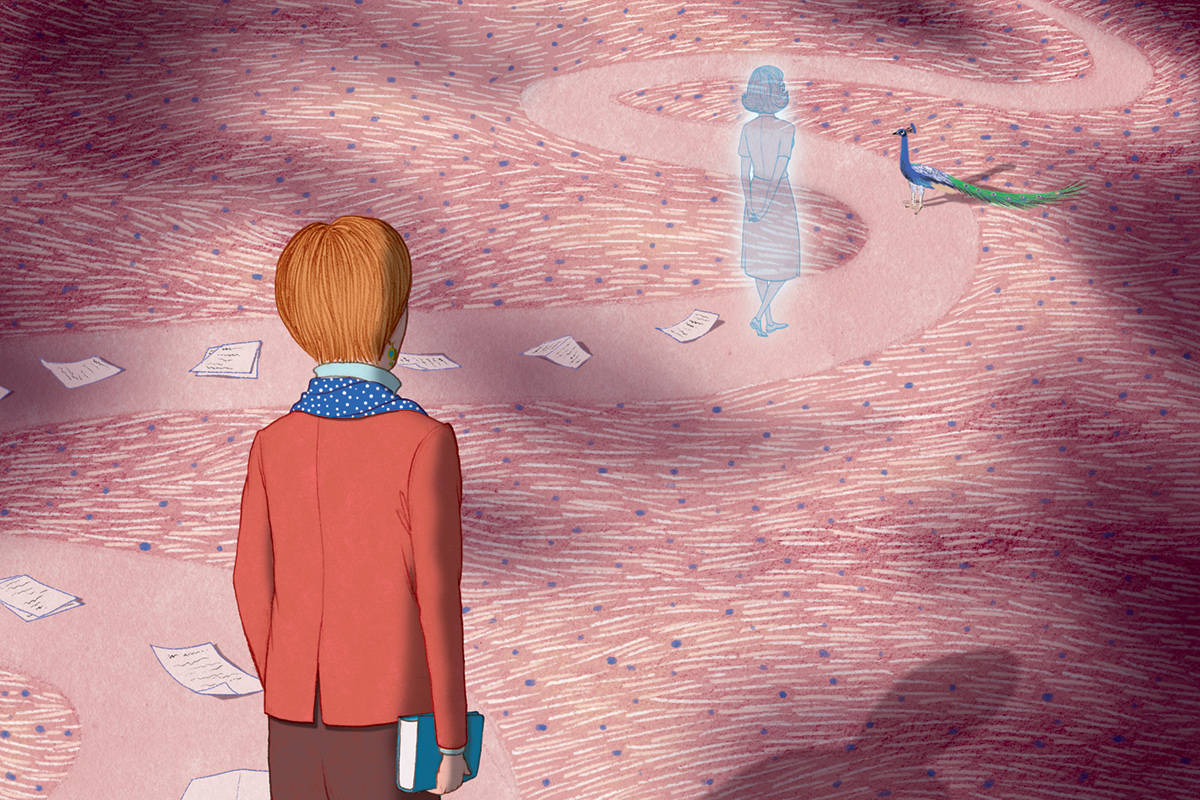Coda
Revelations

When the Manuscript, Archives, and Rare Book Library (MARBL) received Flannery O’Connor’s archives in October, the news emanating from Georgia spread quickly around the world. O’Connor has always stirred up a sense of mystery among readers, so I have been frequently asked what kinds of revelations will be forthcoming from this collection.
While the vast array of unpublished materials will surely yield new understandings of O’Connor’s life and fiction, the most meaningful discovery for me has been through an unfolding personal journey. My own path has converged with Flannery O’Connor’s work at important moments. She spent her early years in Savannah and attended the same Catholic schools in the same era as my mother and aunt. When I first encountered her fiction in high school, I found her strange characters recognizable, yet alarming. The Misfit mystified me.
In graduate school at Emory, I rediscovered O’Connor while studying literature and religion in the Graduate Institute of the Liberal Arts (ILA). There, in the late 1970s, she spoke to me through her fiction and essays in Floyd Watkins’s American literature course, in Bill Mallard’s literature and theology course, and in discussions with then–ILA assistant director Bill Fox and my fellow graduate students. In fact, she spoke to all of us with a language that was direct—and enigmatic—about the sacred embedded in the profane.
When O’Connor’s collected letters were published in The Habit of Being in 1979, my fellow graduate students and I invited editor Sally Fitzgerald to Emory for a talk that turned into a symposium under the guidance of Robert Detweiler. We further surprised ourselves by obtaining funding from the Georgia Council for the Humanities. Adding miracles to mysteries, Sally Fitzgerald agreed to come and spend a week with us.
Thanks to the symposium, I had the opportunity to edit the volume Conversations with Flannery O’Connor (University of Mississippi Press, 1987), a slim book that collected her interviews and kept me close to the world of O’Connor scholarship while my own academic path moved into administrative roles across the university. The symposium also helped to establish the means for Sally Fitzgerald to return to campus regularly for almost two decades as a visiting research scholar, which gave the two of us the chance to form a lasting relationship.
Proximity again led to possibility: Sally Fitzgerald’s presence at Emory prepared the way for the papers of Betty Hester, one of O’Connor’s most avid correspondents, to come here in 1987 (the papers were made public in 2007). Following her death, Sally’s own papers arrived in MARBL in 2008; recently, her daughters augmented those with related materials and correspondence.
The mysteries of connectivity continued to unfold. I had the pleasure, for example, of making a pilgrimage to Andalusia with Salman Rushdie, a trip that suggested uncanny resonances between the kinds of displacement (historical, geographical, and theological) both O’Connor and Rushdie reveal in their fiction. On our way back to Atlanta we stopped down the road in Eatonton, home to both Joel Chandler Harris and Alice Walker, whose papers are held by MARBL. The artist Benny Andrews also lived nearby. In his afterword to the illustrated edition of the O’Connor story “Everything That Rises Must Converge,” Andrews, the son of a sharecropper, notes the discontinuities between their two worlds; but he states unequivocally about O’Connor, “She confronts the leaping flames and churning waters. I have looked into her works and I have found revelations.”
Once I became the director of MARBL, I wished to bring these literary links full circle, building on the foundation of prior MARBL directors and archivists. In this endeavor I had the good fortune of acting in concert with Louise Florencourt, first cousin of Flannery O’Connor and cotrustee of the Mary Flannery O’Connor Charitable Trust. Together we sought to provide a home for the archive, a place where students and scholars could make their own literary and spiritual discoveries.
Flannery O’Connor sought to alarm us through her writing—not purely for the shock effect, but to reveal fundamental truths. Deeply religious, she put forward her conviction that grace is possible in this fierce world, but only if we come to terms with our own displacement in it: ultimately we are all misfits. Yet we may also stumble upon glimmers of self-knowledge and transcendence. In the short story “Revelation,” Mary Grace assaults Mrs. Turpin with her words and book, Human Development, in the waiting room of a doctor’s office.
“What have you got to say to me?” Mrs. Turpin beseeches Mary Grace.
And that is the question posed by this archive to us. Ultimately, the answer will be disclosed each time scholars contemplate the materials. As my own path suggests, each generation will bring to light fresh revelations from the primary evidence of O’Connor’s life and work. In this way, literature becomes embedded in our university, rooted in our culture, and deepened in our consciousness as a living, breathing, almost organic being.
Rosemary Magee 82PhD serves as director of Emory's Manuscript, Archives, and Rare Book Library (MARBL) overseeing the collection and development of significant literary and historical materials.
Email the Editor


